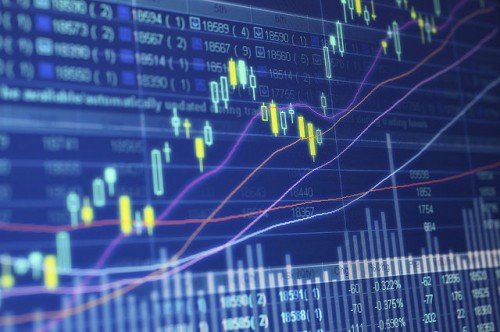
As stated in a previous discussion about hands-on investments, most people are a little bit wary of the stock market. That’s largely because of the complexities of the market as a whole, but it’s also because the movements of individual stocks can seem so sudden and unpredictable. To some extent, this is the point. If it were easy to predict stock movements, we’d all be wealthy! But the perception of random and dramatic shifts in value is often due in part to a faulty or incomplete understanding about how a stock ought to be evaluated.
In large part this is because people who may be less familiar with investing often believe that there’s only one type of value: the dollar price. In fact, there are two basic types of stock value: market value and intrinsic value. The former is what you see as the dollar amount attributed to a stock’s worth. You can pay that amount to obtain a share of stock, which makes it the most literal representation of value at any given moment. However, many experienced traders would argue that the intrinsic value of a stock is actually more important. It’s essentially an imprecise amount determined by taking into account current value, growth potential, intangible assets, and other factors. It’s also thought to be the truer representation of value, at least from an investment perspective. Another way of looking at it is that market value tells you what it costs while intrinsic value tells you what it’s worth.
But how can you actually set about determining intrinsic value? Recognizing that it exists as a separate concept from market value is a key first step, but there are certain methods that have been developed in order to determine a more accurate representation of value than simply market price. For instance, the most common measure for stocks is price to earnings ratio, or P/E. This is the market price divided by the net annual earnings per share. For instance, if one share of a stock is worth $20, and that stock has annual earnings potential of $2 per share, your P/E is 20/2, or 10. A higher PE generally means a more expensive stock, but it could also mean one with greater growth potential. For example, Google (or more accurately, Alphabet) is trading just under $780 at the time of this writing, but still has a PE around 30. That indicates a very high price per share ($780), but close to $26 annua
l expected earnings per share.
Taking this concept a step further, television market analyst Jim Cramer actually recommends using something known as PEG, which is a ratio of PE (as described) to Growth (as in the estimated growth rate for the stock). That estimated growth rate can be found online and often in five-year increments, which enables you to calculate a PEG with relative ease. As Cramer argues, a PEG that is less than one tends to indicate a cheap (and potentially undervalued) company, while over one can indicate the opposite. Thus, a strong company with a PEG of one or less could be a nice opportunity.
These are the most conventional mathematical tools for evaluating a stock beyond its market price. Beyond these, there are also more intangible methods of determining intrinsic value, which involve keeping tabs on industry news, company earnings reports, and other factors that should impact the stock price moving forward. However, if you’re looking for a way to find a numerical value to assist you in making investment decisions, calculating PE or PEG is considered by many experts to be a more accurate evaluation than looking at pure market price.
 SU
SU REDDIT
REDDIT







